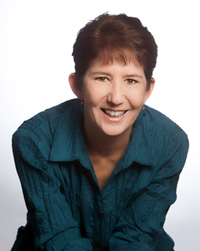
When I was eight years old I announced that when I grew up I was going to be a famous artist and live in Paris. My mother, then a full time college student, instilled the belief that I could be whatever I wanted. She sat me and my twin siblings down to inform us that we could attend any college we desired for free because our father died. As a kid, I didn’t understand anything about social security or Veterans survivor benefits; I just knew that my mom had given me a dream to hang onto.
Creating art was an escape that helped me cope with the suicide of my father in our home and the subsequent emotional numbness that enveloped my mother. When I was 19 years old, my brother had his first psychotic break, and I was scared that I would be next. After ten years of watching my brother decompensate with severe mental illness, I began to have uncontrollable crying spells that baffled me. Already confined in depression, intense fear that something horrific was about to occur crept in and swathed me in anxiety. I desperately sought relief from the heaviness that weighed down the muscles needed to speak, much less smile. With determination and faulty reasoning, I figured I would find out what was wrong and fix it so that I could get my life back. It wasn’t an easy fix, and I couldn’t do it by myself.
After being diagnosed with major depressive disorder and taking anti-depressants for several months, I rocketed into rapid cycling and was hospitalized for the first of many times in 1992. After many medications and more hospitalizations I was diagnosed with bipolar disorder. The mania symptoms I experience are not the classic type you see in movies. I mostly experience dysphoric mania, which is the concurrent presence of depressive and manic symptoms, the most dreadful state I’ve ever endured. Imagine feeling despondent, exhausted, detached and hopeless while simultaneously agitated in warp speed. I could not sleep or eat, was confused as racing thoughts spun in my brain while what felt like jolts of energy zapped through my torso into my extremities.
I joined a six month study at the National Institutes of Mental Health in Bethesda, MD. My time living at NIMH allowed me incredible opportunities to listen to some pretty smart folks explaining brain functioning and treatments for mental illnesses. I spent a lot of time in the vast libraries on the campus and participated in every type of therapy available to me. I especially benefited from art therapy, cognitive behavioral therapy, meditation, and exercise groups.
Back in California, I struggled through mood swings to continue learning about bipolar disorder. I was empowered by expressing my experience with mental illness through drawing, painting, photography and mixed media, and having my artwork displayed in galleries. I attended many support groups and became an advocate for myself and others. Psychotherapy was an immense help in learning to cope with my new “normal.”
As I began to get better at managing my symptoms and the psychological distress they bring, I decided I wanted to become a therapist. I went back to school and completed a Master of Science degree and am now a Licensed Marriage and Family Therapist.
It’s been 15 years since I was last hospitalized, though I haven’t forgotten the confusion, fear and pain of the most challenging time of my life. That’s why I now have my own business specializing in working with women living with anxiety, depression and bipolar disorder.
I don’t consider myself “recovered,” as bipolar disorder is not a broken bone that I can completely recover from. I manage bipolar disorder with therapy, medication, practicing coping skills, paying attention to sleep, nutrition, exercise and surrounding myself with healthy relationships. I also embrace joy and laughter every single day.
My determination to understand bipolar disorder by educating myself, creating art, having very supportive family and friends and an outstanding professional treatment team helped me to stabilize. I didn’t just get my life back; I created the life I wanted.

